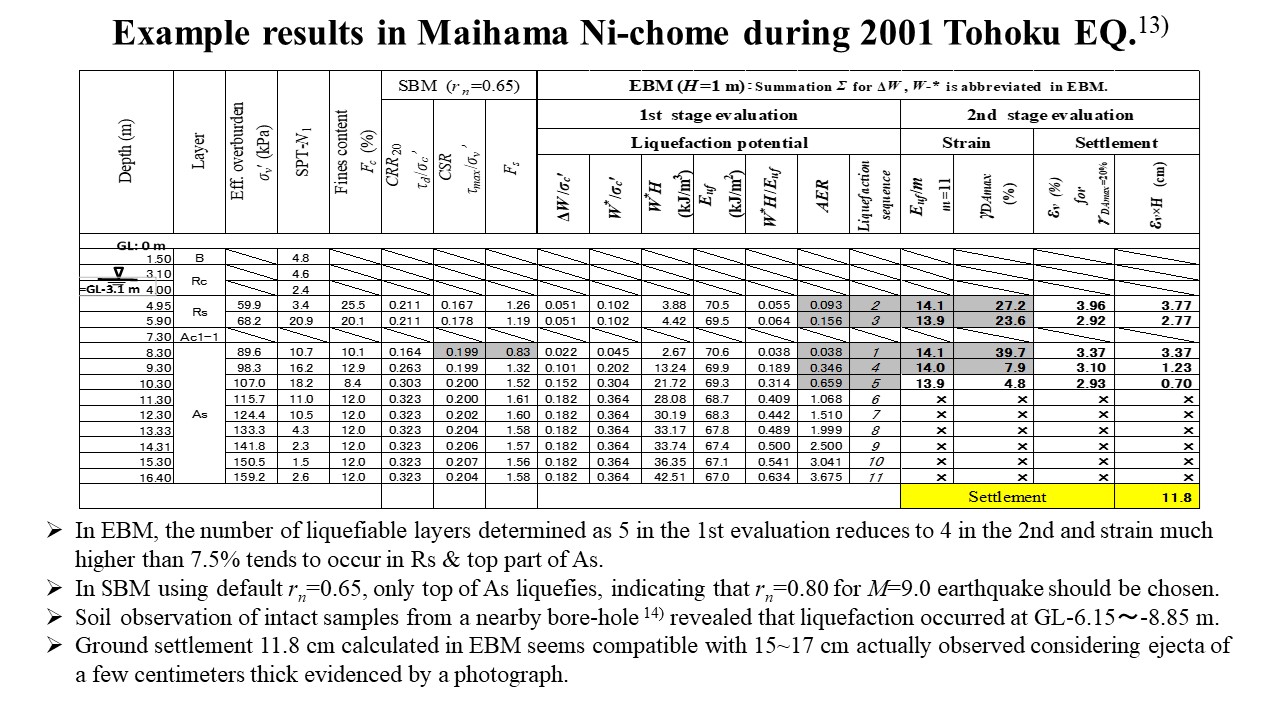Takaji Kokusho
Professor Emeritus
Chuo University, Tokyo, JAPAN.

Why Energy is Recommended ?:
It is widely recognized that Dissipated energy in soils during earthquakes is a key variable determining liquefaction behavior uniquely independent of wave forms rather than Acceleration currently used in Liquefaction evaluation practice. The graph below vividly shows how uniquely the dissipated energy can decide pore-pressure buildup up to 100% during two earthquakes of quite different time duration and wave form; 2011 Tohoku EQ. (M=9.0, lasting 3 min.) versus 1995 Kobe EQ.(M=7.2. lasting 10 sec.). 
To practicing Engineers:
Please try this once to compare the results with the conventional stress-based evaluation or sophisticated numerical methods. Hopefully, you can recognize its simplicity and convenience in comparison with other methods by only implementing Excel calculations. Please email koktak@ad.email.ne.jp if you have any questions.
OUTLINE OF THIS ARTICLE
Liquefaction potential and its consequence are predicted here in Energy-Based Method [EBM] in contrast to conventional Stress-Based Method [SBM] by comparing capacity (cumulative dissipated energy) with demand (upward earthquake wave energy).
Studies on soil profiles indicate that EBM (in the 1st stage evaluation) tends to yield similar results to conventional SBM for ordinary earthquakes but can reproduce actual performance better than SBM for peculiar earthquake waves with exceptionally large/small energy in contrast to acceleration.
Induced strain and settlement can further be evaluated in the second stage of EBM by assuming that equal demand energy is allocated to every layer predicted liquefiable in the first stage.
This two-stage evaluation applied to examples of uniform sand and case-history sites demonstrated its reliability in comparison with SBM results as well as with actual performance and soil settlements in case histories.
Thus, liquefaction potential including induced strain and settlement in 1D soil models can readily be determined in multiple-step Excel-calculations, without resorting to complicated time-increment effective stress analyses.
REFERENCE OF THIS ARTICLE:
Kokusho, T. (2021):Energy-based liquefaction evaluation for induced strain and surface settlement – evaluation steps and case studies –, Soil Dynamics & Earthquake Engineering, Elsevier, 143, 106552.
It can be downloaded free until April 6, 2021 at:
https://authors.elsevier.com/a/1cavBytxOJ5lh





















